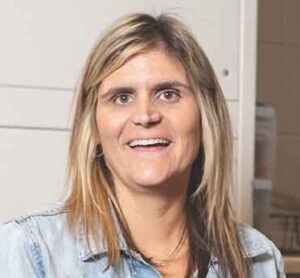
Key Takeaways
- Universal school meals help the entire school community, says Martinez, a nutrition director.
- Free school meals for all meant staff no longer had to send letters to families about students’ negative lunch account balances.
- Teachers no longer see behavior issues from students who go hungry or are embarrassed in the cafeteria.
Elizabeth's Story
Elizabeth Martinez, the director of nutrition services for Nevada’s Carson City Schools, says having universal school meals for the last three academic years “has been transformative” for the entire school community.
All schools had funding for universal meals through the 2021–2022 school year, reaching 5 million more students than before the pandemic. Nevada used some of its American Rescue Plan funding to continue providing school meals for all students for the next two academic years.
Martinez explains that universal school meals changed things overnight for students and families, as well as her staff.
“I work with the most amazing people who just have the biggest hearts,” says Martinez, who oversees 42 workers across 11 kitchens. “It was so hard on them to have to take away a meal from a student who couldn’t pay for it,” she says. “All of that goes away with universal school meals.”
The income limits to qualify for free and reduced-price meals are unrealistic, and we need leaders who understand that.
Staff time no longer had to go toward sending letters to families about students’ negative lunch account balances. No longer did teachers see behavior issues from students who were going hungry or being embarrassed in the cafeteria.
The number of meals served in the district before the pandemic, roughly 700,000 per year, increased to over a million once universal meals went into effect.
“So many more students took advantage of it,” she says. “That really speaks to the need in Carson City and how much universal meals help.” She hopes that lesson is not lost on state and federal lawmakers, who will make decisions about whether to extend universal meal programs.
“The income limits to qualify for free and reduced-price meals are unrealistic, and we need leaders who understand that,” she says. “There’s a lot of unseen need.”





